Smart runners know a little strength training goes a long way to helping improve performance and reduce risk of injury. Smart coaches know sport-specific training should be built on a foundation of good movement. Anyone who has tackled the StrongFirst snatch test knows you can improve cardio endurance with resistance training.
Could a program combining all those elements help a non-runner train for a half-marathon? No need to wonder—one StrongFirst Certified Instructor has done the experiment for you.
“I do not like running. Actually, I’ve run only five times during my preparation in the past four weeks.”
My interlocutors were surprised, standing as we were on the banks of the Danube, waiting for the start of the 13th Bratislava half-marathon. Sure enough, I didn’t have the look of a typical distance runner—black shorts, grey StrongFirst T-shirt, simple cotton socks in Chuck Taylor-style shoes.
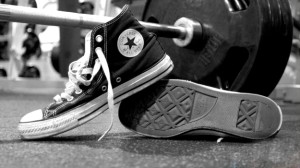
They would probably have thought me a complete beginner had I not admitted that I intended to finish the race in 1 hour 50 minutes. Though not a world-class time, it was faster than any of them expected to achieve. Here we were, a group of middle-aged people, and the one with the most ambitious target was the one who ran the least.
In my twenties, I ran to support my martial arts practice. I eventually ran two endurance races: the Prague marathon in 2002 (while young and in good shape), and Bratislava half-marathon in 2009 (recovering from several years of a couch-potato lifestyle). Since then, I’ve favored strength training over endurance. A mild temptation to run again sprung up periodically, but I didn’t feel overly motivated.
To Become Fit and Healthy, Get Strong First
As a StrongFirst Certified Instructor, I’m convinced that strength is the master quality. Unfortunately, especially amongst the running community, this idea is hardly widespread.
My typical students are over 40, with families and demanding jobs. They want to stay (or get back to being) fit and healthy. Due to the constraints and pressures of their schedule, they often have recovery issues. They believe they need to run first and a lot, to ‘build their cardio’ before they can think about getting strong. But a middle-aged person running without a foundation of strength and mobility is a recipe for potential disaster.
I find it challenging to persuade new students to prioritize strength. Quoting experts and studies usually fails to convince them, so I decided to add weight to my argument by personalizing the evidence. After all, I am one of them: a 42-year-old man with a family and too much work. To make matters more interesting, I have not been a runner for years.
The Experiment
It seems logical to run a lot when preparing for a 21.1km running race. The classic half-marathon training that my friends followed consisted of many running sessions—long runs, tempo runs, and intervals—to develop the different qualities the race demanded. Typically, someone with my target race time would run at least three times per week and steadily increase their mileage over weeks and months.
However, if we start to look at it differently, could we not get similar results with less time on the road? Would it be possible to complete the distance on race day without running very much during training? What if I went fully minimalist? No fancy running shoes, no complex tools during the race to check heart rate or speed? Just me, regular flat shoes, an old mechanical watch, and a StrongFirst T-shirt?
I stepped back and looked at the qualities required for distance running. We need good quality movement for efficiency, strength for locomotion, and the energy to endure. I wondered if a program focused on strength and developing specific energy pathways could allow me to minimize training time spent running. This was the genesis of my experiment: running without running.
Building a Strong Foundation
Emily Bearden, SFG 2, SFL, achieved a half-marathon without running at all during training. She finished it because she is strong, physically and mentally. It showed me that I could go the distance with minimal specific training.
On a higher level, Brian Gill, SFG2, SFL, ran a marathon under the 3-hour mark thanks to barbell training. This confirmed for me that being stronger seems to also improve performance.
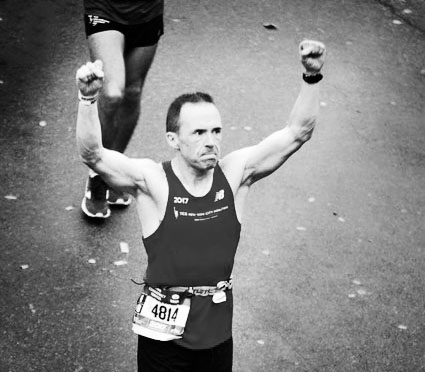
In December 2017, upon my return from the SFB certification in Italy, I registered for the Bratislava half-marathon, 12 weeks away.
My first goal was to keep getting stronger. When you have strong abdominals and legs, the relative effort needed during the race is at a very low intensity and more easily endured. Keeping a good posture becomes easier, which ensures safety, enables both optimal breathing and good running mechanics, and reduces the risk of compensation injuries.
Since I would be running for distance, the choice of deadlifts rather than squats was a no-brainer. Firstly, it promotes less hypertrophy and weight control is vital for a distance race. Secondly, it strengthens the whole body, the back in particular, and facilitates a good posture when done well. Thirdly, it trains a strong hip hinge movement which is the primary pattern a runner needs.
I also chose barbell military press as my second exercise. Running is not only about legs. A good running pattern requires a stable torso, with easy, efficient arm movement. The classic standing press, with feet on the floor, teaches the body how to effectively transfer force all the way down from hands to feet. Additionally, the relatively low absolute intensity of this lift, compared to the bench press, would prevent me from gaining weight. Admittedly, for me specifically, another reason was that I simply like to lift heavy objects above my head.
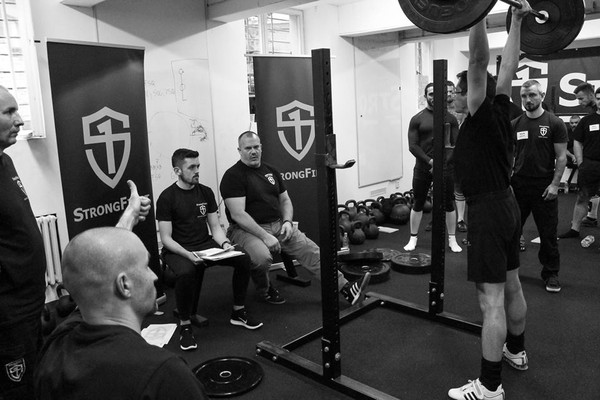
For most runners, a good approach would be to follow Pavel’s Power to the People plan from the StrongFirst Barbell Course manual, which also uses deadlifts and barbell presses. Actually, any sensible, serious strength program will do, as long as it not too draining. Simple and Sinister or PTTP are good choices; Sheiko’s squat routine is not.
Being a relatively experienced lifter, I followed a Plan Strong™ approach, with 2 to 4 sessions a week. Most of my lifts were around 75-80% of 1RM. Intensity and volume varied independently in every possible combination. I suggest attending a Plan Strong™ seminar or All Terrain Conditioning™ to learn more about this type of programming.
Understanding Endurance, Energy, and Intensity
Fundamental endurance is all about aerobic capacity and aerobic capacity is best built at low intensity. This is the purpose of long runs in a typical running program. However, to keep running down to the minimum effective dose, I needed a substitute. This is where walking comes into play.
We are so used to mechanical transportation that we have forgotten that humans were designed to walk most of the time. Fortunately, I already walk a lot to get around. It is fast enough to raise my heart rate but slow enough that it does not exhaust me. It is low impact and very accessible. This effective—yet often ignored—aerobic training also fits perfectly in any busy person’s schedule: a walk in your workplace or to the shops becomes part of your training.
To sustain a run for nearly two hours, at a good pace anyway, I also needed to pay attention to my lactate threshold. Following Strong Endurance™ principles, it is better to delay lactic acid production than to develop a higher tolerance to it.
How can we delay the burn rather than feel it? We repeat an exercise at high intensity for a short time, followed by plenty of rest to allow our aerobic system to deal with the metabolic byproducts of intense effort.
Staying consistent with my minimalistic approach, I needed something that would work with my busy schedule, provide a high level of variability, and be effective. My choice: low repetitions of one-hand swings (28kg to 40kg), every minute on the minute. I kept the reps low so that I kept high power all the time. For instance, I had no problem swinging 28kg and 32kg for 10 reps; but I cut it to 7 reps for my 40kg swings. I set my duration by the roll of some dice and chose the bell weight by how I felt on that day. This kept things as simple as possible.
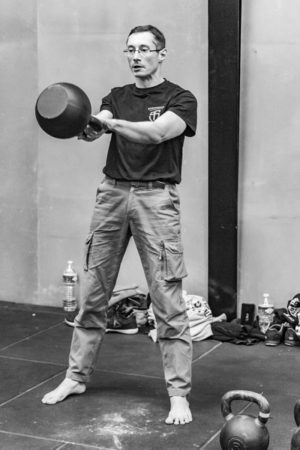
Improving the Skill of Running: Quality of Movement
Running was not cut completely from my program. However, I would be running to practice the skill, not to improve my endurance or speed. I had initially intended to start running 6 to 8 weeks prior to the race, but life rarely goes as planned and I started my runs with only 4 weeks to go. This was to be the epitome of minimalistic half-marathon training.
March 10th, 2018: I went for my first run in years—just under an hour, and at a pace that didn’t leave me too tired. I could have run for much longer. Then, every sixth day, I went for another run, focusing on quality of movement, not speed nor duration. I became conscious of what my limbs were doing, how my feet touched the ground, how I was breathing. The running sessions became a form of mindfulness meditation.
My run training consisted of five sessions, covering 44.4km, and lasting less than four and a half hours in total, over 4 weeks.

The Result
Race day. I woke up early, performed my morning mobility routine, ate my eggs, drank my coffee, and walked to the event to meet my co-runners.
I did a bit more mobility work—Super Joints, leg swings, prying squats, Cossack squats—and a few easy 20-meter jogs. After the official talks and the national anthem, energetic music started to play.
1 minute to go. While my fellow runners danced, I settled, eyes closed, visualizing my running pattern.
Start!
Less than 1 hour 47 minutes later, I crossed the finish line in the fastest 25% of my age category. Not bad, considering my minimalist training. I also outran my friends even though they are all regular runners.
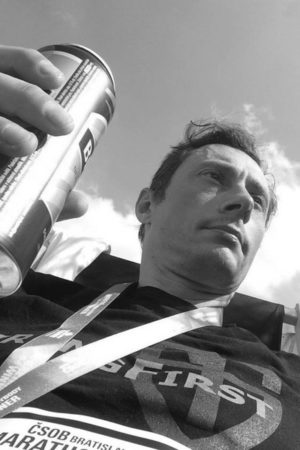
A Strength Training Recipe For Runners
Would I recommend a minimalist training approach to everyone looking towards a half-marathon challenge? No, not to everyone. Let’s be clear: this was an experiment. Nonetheless, the experiment yielded some valuable take-home lessons:
- The effort my muscles had to provide was extremely low relative to their capacity. Consequently, I could easily maintain a good posture and a proper running technique up to the finish line with less overall fatigue. Additionally, higher strength means higher running economy. The actual strength program and modality choices are secondary. Choose what fits your schedule and constraints, as long as it is strength-oriented
- Aerobically, it was easy. After the race, I recovered very quickly (the post-race beer probably helped). Walking a lot is a simple, accessible and effective fundamental endurance practice.
- Swings and snatches for low reps and plenty of rest develop power and delay lactate production. It allowed me to run fast enough with no burning sensation. The ‘A+A’ (alactic and aerobic) approach to interval training from Strong Endurance™ simply works.
- The SAID (specific adaptation to imposed demand) principle applies: you still need to run. However, quality is more important than quantity. We can run to improve our running pattern, not to blindly accumulate miles.
I can hear detractors saying that my time is not an extraordinary achievement. Agreed. A quarter of the crowd ran faster than me, but what we don’t know is how much time they had to devote to their training leading up to the race; time they could have potentially spent on other activities like quality family time, recovery, hobbies, or work.
Most regular middle-aged people who register for such an event are not aiming to break records. The event is secondary to the primary goal they hope it will deliver—better health. Why not change our approach and train with this primary goal in mind?
Follow a serious strength training program; walk a lot; swing heavy bells for low reps with a lot of rest; treat running as a skill. It will do a lot for your well-being, save time, decrease your risk of injury, and you can still achieve a performance to be proud of.


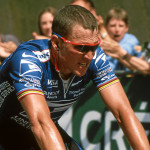

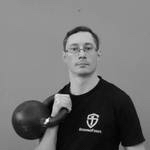

Great article Jean-Francios. About two years ago, I began training for several trail running events over the upcoming winter. My plan was to only run 1 day per week. I maintained several days at the gym doing basic strength moves with a steady dose of swings throughout. I was able to finish multiple trail marathons and two 50k trail runs without injury. Finished off that season of running with a PR in the half marathon distance. I was 52 years old at the time. I do not have a fraction of your knowledge, but I am living proof that a minimalist approach to running can be supported with strength work. I am just getting exposed to many of the Strongfirst training regimens, but I am very eager to apply the concepts in a more disciplined way for a very tough marathon I have my sights on for early 2020.
“Traditional” running programs do bring results for me, but they also bring injuries… I don’t have all the answers, but I do think you F guys are on to something… Thanks again for sharing your experience.
Nice results, Matt.
Wish you a good training and success for your next marathon!
This is very interesting, and more or less my own approach right now. S&S works better for me than running right now, but I still do some (shorter) races now and then.
Have you thought about jumping rope, to further minimize the need for running? It should work pretty well to improve your form at the basic level. Have a look at this: https://runninginsystems.com/2014/09/03/jumping-rope-to-achieve-basic-running-form-2/
Jumping rope is great on its own. It sure could be another option, as a HIRT training.
I would still keep some running. In my case, I was running with minimalist shoes, and I needed to ensure that my running mechanics, on concrete, was good enough (skill practice).
Excellent work and an enjoyable read. For the complete picture, how much walking were you doing (duration and frequency)?
Thank you, Craig.
I can’t answer. I never really paid attention. I walk for locomotion, so it is not something I log.
Interesting results. Do you have any experience with “GtG” style running training?
By that I mean like 3-12 min morning runs 3-6 times a week. My intuition says that it would make the form much more efficient with very little investment in terms of added load. Still keep the one long run per week and focus on strength.
I have no experience of GtG running.
I like the idea, for a focus on quality of movement, although logistically, it becomes a bit time-consuming (10 min of running takes a lot more than 10 min of time).
Great article! I was wondering how long your swing EMOM session were and how many times per week you performed them. Thanks!
Happy that you liked it.
The main rule for my swing sessions was variability.
The weight was fixed by feeling, for each set.
I had 2 to 5 sessions a week (most of the time 3), from 4 to 24 minutes (most of the time around 10-15: decided with dice). At one point, close to the race, I travelled, so I continued with double swings with two 24kg, with a simple 10min EMOM 3 times per week.
A real HIRT would have been better, but EMOM was simpler. Also, for most people, I would recommend a more structured approach than the dice (Al Ciampa has written a good article on this).
It was just fun to start each session not knowing if I had a lucky 4 or the dreaded 24 (this one happened once…).
It was really great to read an honest story of training for a distance running event with little running. People talk about it often, but rarely do we get a behind-the-scenes look that includes all the details.
You planned intelligently, you executed your plan, and you achieved your desired result. Nice.
Thank you Steve.
I have been talking a lot about it myself. I thought it was time to walk the walk, and put in practice what I said.
I would not recommend that little running to a new runner in general, but would definitely insist on strength, walking a lot, quality of movement, rather than blindly accumulating junk miles!